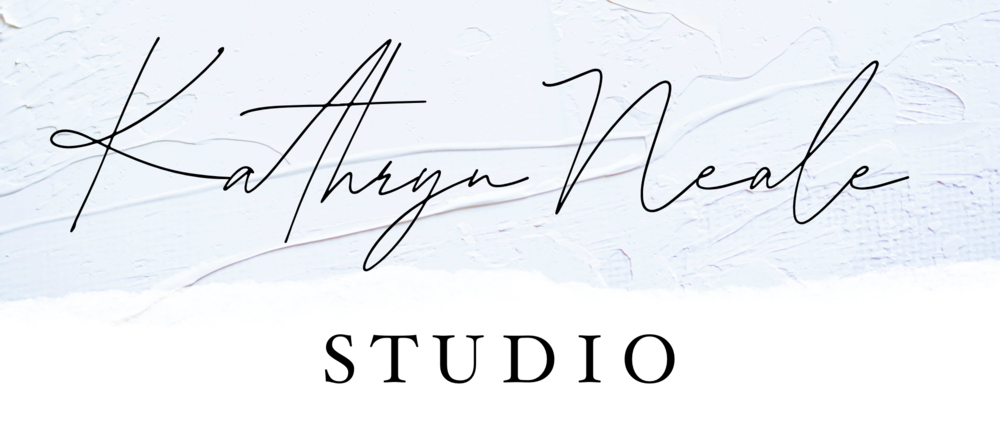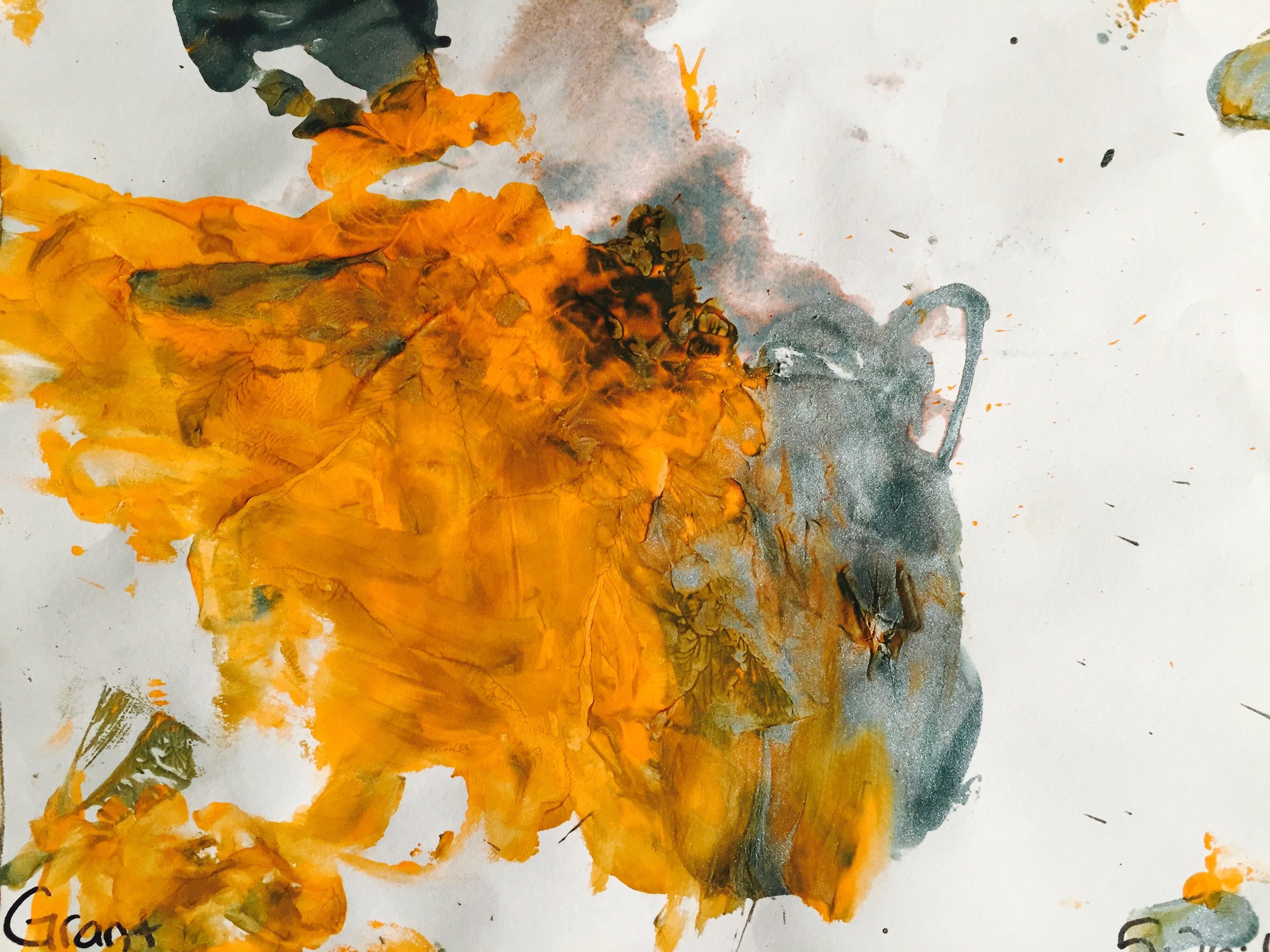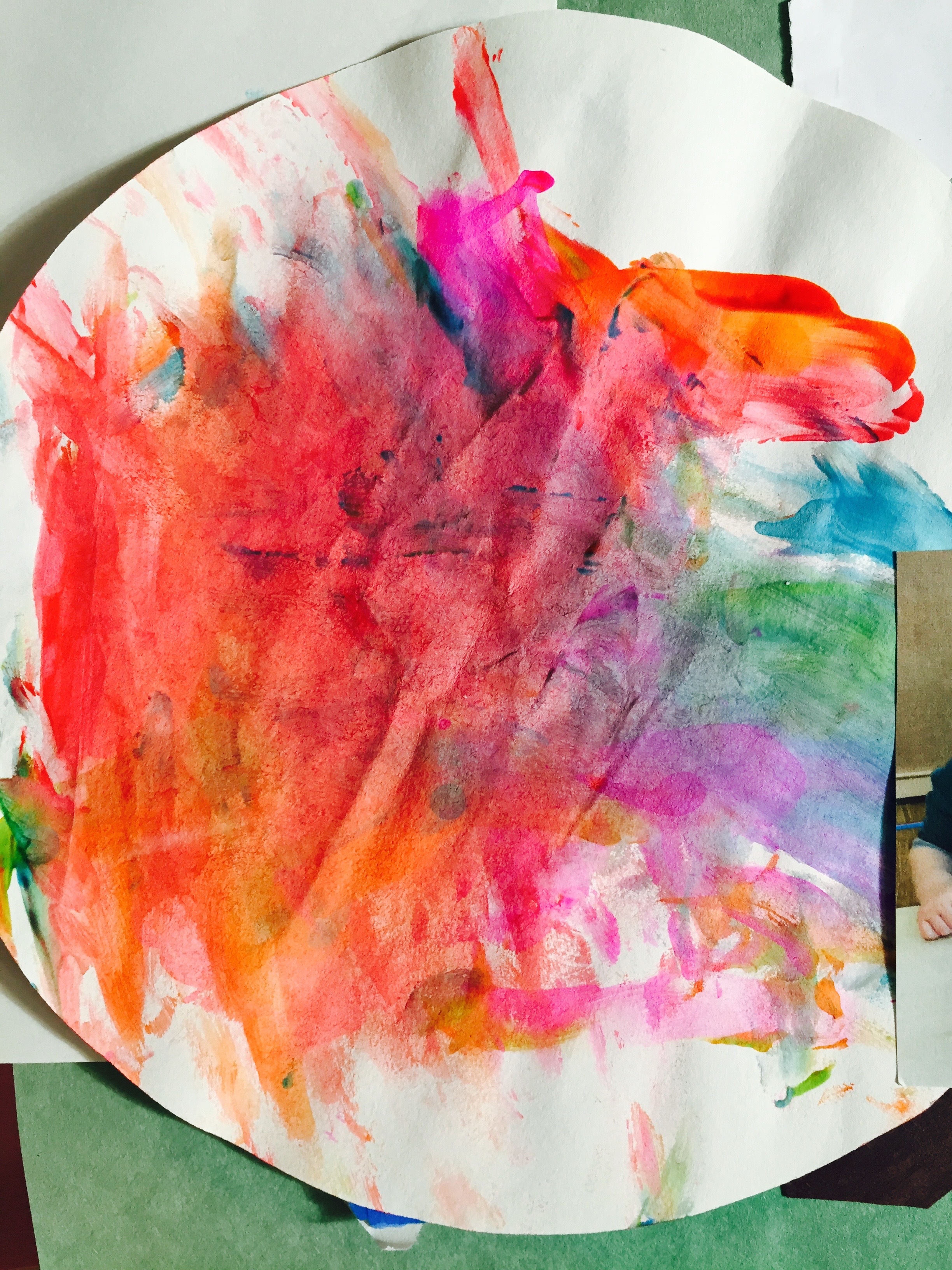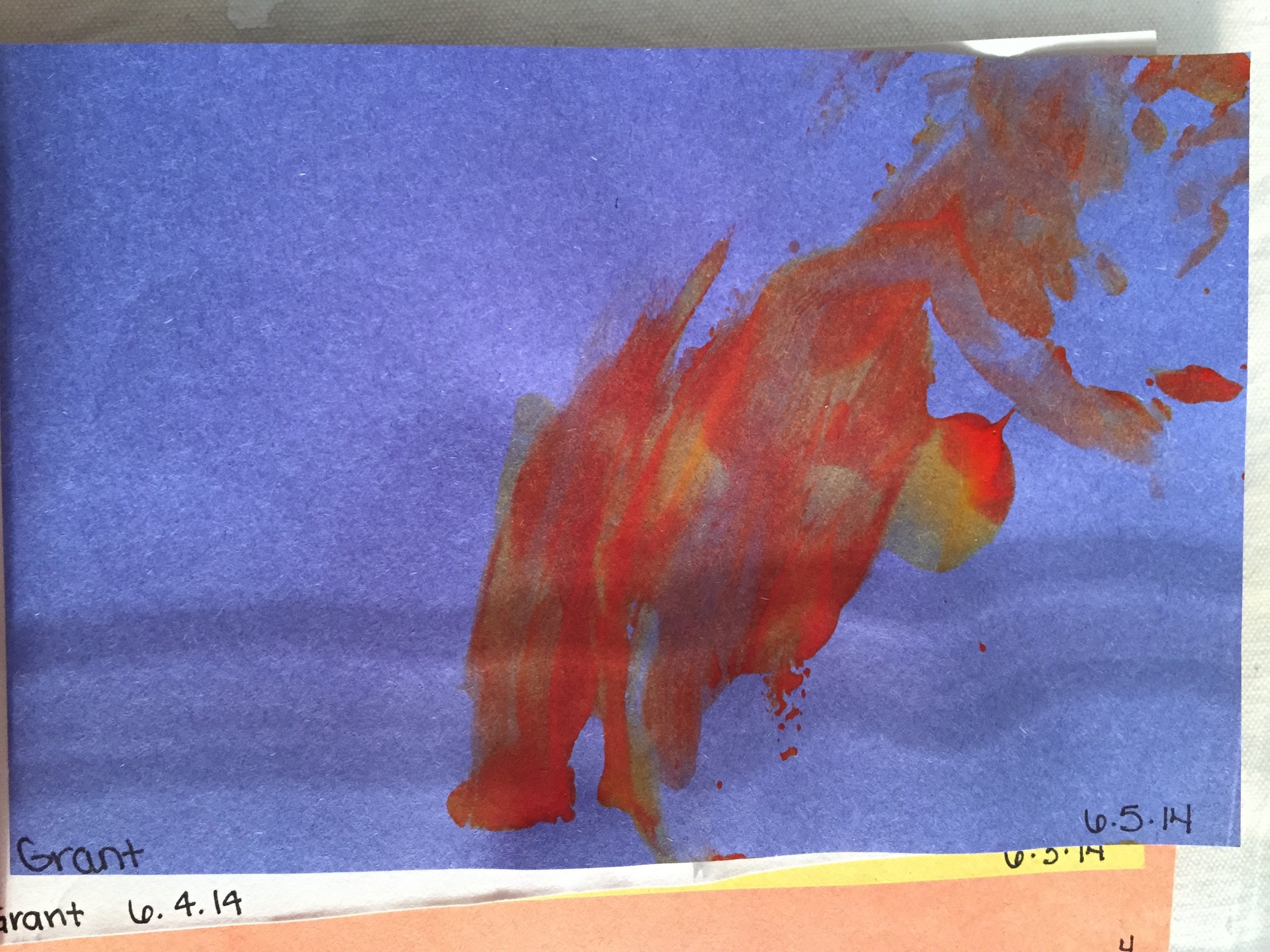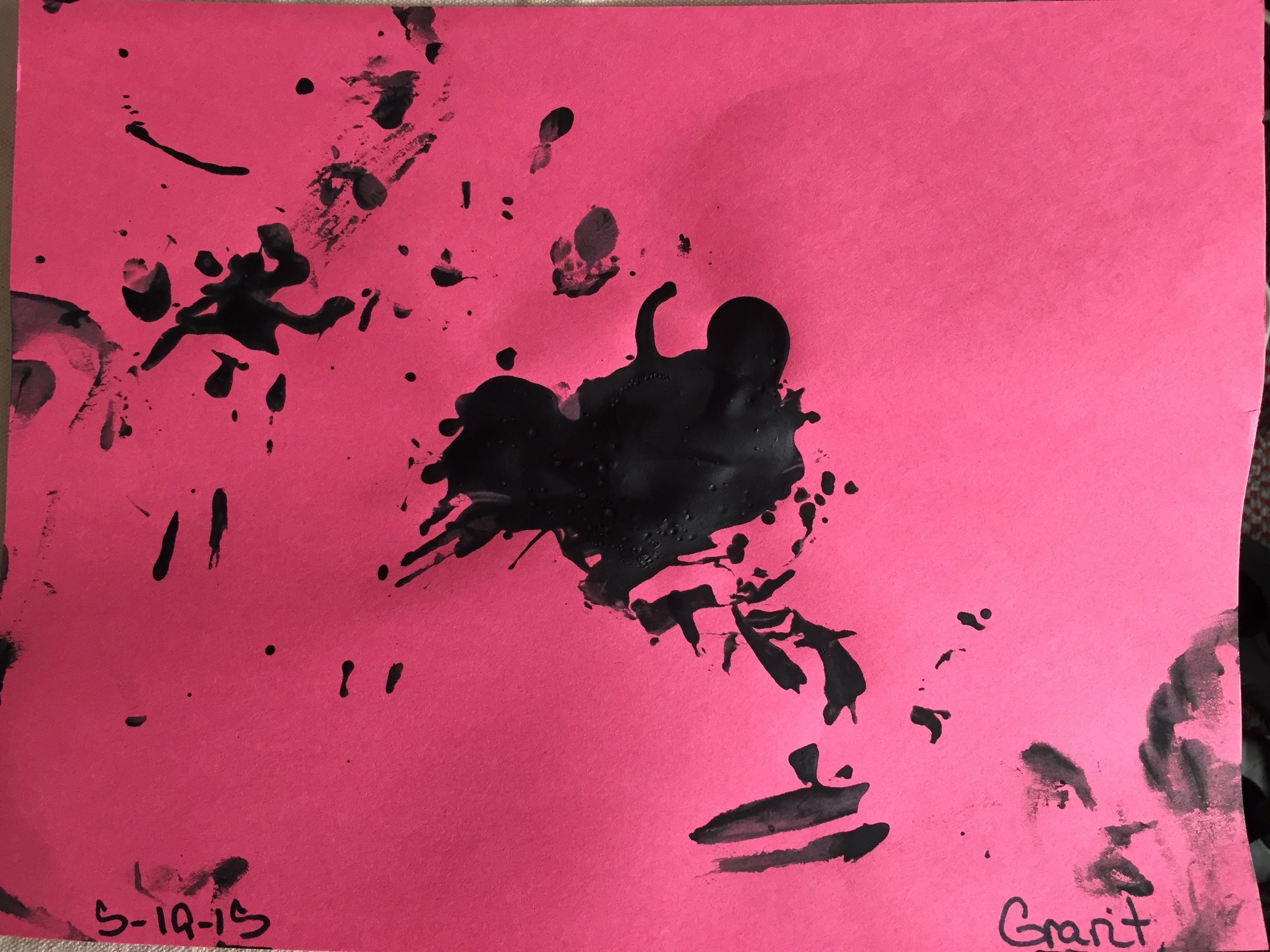 What is freestyle painting? Funny. I don' tknow!! It's curious, I've never ever thought of myself as "freestyle" until writing this blog today, literally. I'm an abstract contemporary artist. That's how I'm labeled and within the art world, that is how you define yourself--a contemporary artist who paints figures, or contemporary landscape artist, or abstract geometric artist etc.
What is freestyle painting? Funny. I don' tknow!! It's curious, I've never ever thought of myself as "freestyle" until writing this blog today, literally. I'm an abstract contemporary artist. That's how I'm labeled and within the art world, that is how you define yourself--a contemporary artist who paints figures, or contemporary landscape artist, or abstract geometric artist etc.
I encountered the term freestyle while looking up books on Amazon for abstract paintings. This must be a new marketing term for consumers to understand a bit more what abstraction is perhaps? Because in the academic and professional fields, I've not encountered that definition before and it's not an official definition yet in the art world. But one things for certain, it is a very general label that lumps practically everything called "art" into it.

For my work I don't mind using the term "freestyle" because I do think that it is starting resonate easier with those of you who want to learn this kind of style. In the art world, it would be classified as "expressive." But for my definition, I am going to define freestyle as I define my artwork: organic, abstract, contemporary, free-form, gestural, and expressive. I also will go one step further to add that freestyle painting implies finding a personal style or voice through abstract painting, at least that's the most important thing to convey to any newbie artist that wants to experiment with this kind of abstract painting.
Abstraction has over a 100-year old history. So anything "abstract" can also include all sorts of imagery within in it. During the early 20th century, budding abstract artists were painting anything that wasn't found in the "real world."
By 1950's, with Jackson Pollock who rocked the art world with all-over gestural paintings, the term expressive became identified with his style specifically, abstract expressionism. Decades after him, we've gone back and forth, reacting against Pollock's work, and then reacting against those who've reacted, and then taking that and ripping it apart and then piecing it back together, etc. (splitting up into an art historian's nightmare, how to classify 1800 different "styles?" since the 1950's?). You could easily argue that everything since Jackson Pollock in the artwork has been a reaction against him. That the only true originality in art was Picasso and Pollock (yes, that's stretching it but he sure has had a tremendous influence on how we culturally and socially think about art).
Today, pretty much anything and everything goes, and the "interdisciplinary media," academics love to call it, emphasizes more immersion-type media like installation work, photography and video. As you can imagine, there have been endless debates for decades and decades arguing that "painting is dead" after Pollock. It just goes on and on.
So it all works.

My latest series of artwork is mostly abstract, although I reference floral patterns and stylized imagery and even sometimes have inserted bits and pieces of photographs of flowers or trees or forest imagery into my paintings (especially experimenting with my master's work). I love patterns from wallpaper and textiles and have been incorporating them into my work since my master's program.
But the difference is that I abstract those images themselves. I rarely just take something that is referential (like a photograph of a flower) and just insert it into my painting whole so that the viewer sees it in its entirety. It doesn't mean I won't some day, but for now I'm more interested in abstracting imagery, which by definition simply means "freedom from inserting representational qualities in art." I manipulate that flower photograph, either by pulling it apart or cutting it up so that there is a familiar reference that you might be able to make out, but at first glance, all you see are colors and shapes. And then usually embed those images into the whole piece so that my mark-making, brush strokes, painterly style is mixed in with that image. That is essentially abstraction. A great example is my Butter Cream (2011) circle painting where I do exactly that with photographs of leaves from a forest. You cannot tell unless you get really up close that those are cut photographs.
Abstract painting strips all imagery down to the essentials: color, form, shape, texture and line. There are as many different types of abstract art as there are people. In the art history context, abstraction includes a much wider definition, again simply art that does not reference the "natural world" around us (representational) but uses color, form, line, shape to depict imagery. It could be sculpture, a multi-media presentation, graphics or even photography. It can be geometric and architectural.
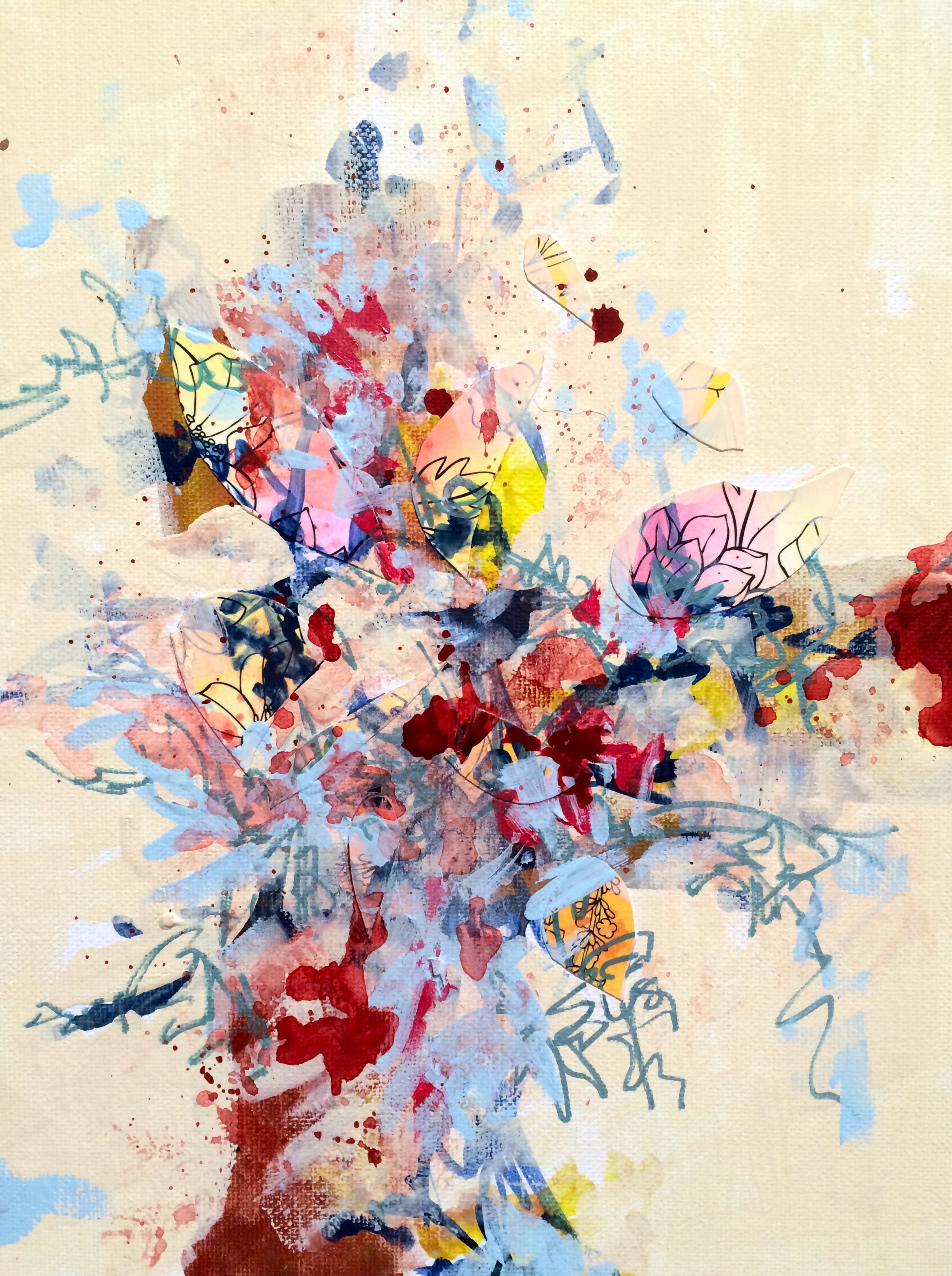
As for my painting, I'm classified within the expressive camp. Oftentimes you might read or hear the term mark-making or painterly mark which means the way in which the paint (or other type of medium) is treated on the surface of the canvas (or wood, or panel or whatever). If it's applied with a brush, it's literally the way the paint is manipulated by the brush on the surface. Abstract Expressionism again directly references Pollock because it is the physicality of the paint with the surface that is the painting. There is nothing else really. Therefore, mark-making is also a broad term that can be applied to how the paint is applied to any surface. For example, it can be poured, pooled, scratched, whipped, thrown, sliced, painted, scraped, wiped, blotted, stamped, finger-printed, basically you name it! The tools used are also very broad, as are indeed the different types of media that is applied. And there are exceptions to this generality of course (that is what the modern and contemporary movements in painting are consistently pushing boundaries of what we expect a painting should look like or be). But for our context, the way that you express yourself through your favorite media on a 2-dimensional surface constitutes your personal style. And it all lives under the umbrella term of freestyle.
So join me in freestyle abstract painting! I would love to get feedback and hear your thoughts.
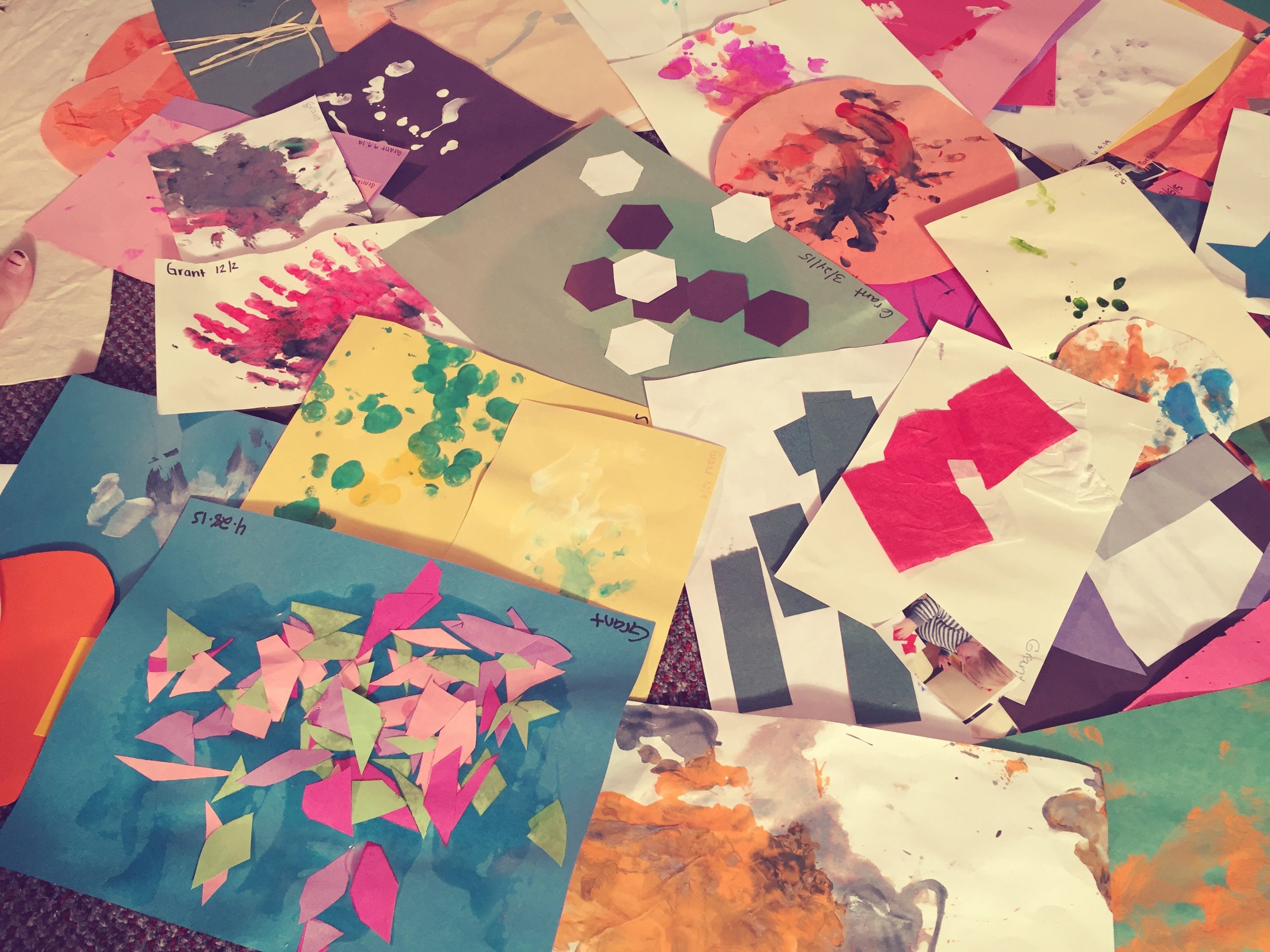 Tip #2 is to let yourself go like your a little child. Envision a time when you remember playing as a child having so much fun on a creative project (spontaneous, in the moment, delight in each act without judgment, etc. - think of child or your child, they try, try, try, try, try, try and try again until . . . they get it!, squeal with delight! They are so PROUD and want your approval (your inner child wants your approval).
Tip #2 is to let yourself go like your a little child. Envision a time when you remember playing as a child having so much fun on a creative project (spontaneous, in the moment, delight in each act without judgment, etc. - think of child or your child, they try, try, try, try, try, try and try again until . . . they get it!, squeal with delight! They are so PROUD and want your approval (your inner child wants your approval).